
In part 1, we examined the recent demise & diminishing popularity of short-wave radio, current stations operating & a background on this part of the radio spectrum. In this conclusion, we’ll explore the current radios available to tune in to the world & offer some perspective on why it may be important to not abandon this most ancient means of providing worldwide communications.


Portable short-wave receivers – current technology & very affordable: CC Crane Skywave SSB; Sangean ATX-909
If the short-wave bands were truly dead, manufacturing of new, efficient, modern short-wave radio receivers would not be occurring. Far from it, a number of companies are devoted to selling some excellent radios that include short-wave bands & include controls & accessories to make tuning in of these stations easier. Many of today’s short-wave sets are portables, although there are a few ham radio companies committed to providing desktop sets with quality tuning capabilities. There is also the exciting new world of “software defined receivers” (SDR’s) that are nothing more than a small box hooked up to an efficient antenna on one end, & a computer with companion software on the other end. Many companies that once made quality short-wave receivers are no longer producing models or no longer in business. Sangean, Tecsun, C C Crane & Eton are at the forefront of today’s portable receivers with many models & features to choose from. Prices range from $50-$400 depending upon the quality one is seeking. While many contain whip antennas for the more powerful signals, most of the higher end units have provision to hook up an external wire or loop antenna intended to boost weaker signals from lands afar. The few remaining desktop sets are actually capable of transmitting on amateur “ham radio” bands but doing so without a license or even a properly tuned antenna is unwise, not to mention illegal. Nonetheless, a few companies offer transceiver models that are also geared to short-wave listeners who may have no interest or intention of obtaining a ham radio license & merely want to avail themselves of short-wave radio services. Icom Radio headquartered in Bellevue offer such models as the IC-7300 & the new IC-705 just about to hit the market. Alinco & AOR also sell desktop radios. These all tend to be very pricey & only for the most avid of listeners willing to shell out $1000-$2500 for such units. “Software Defined Receivers” (SDR) are the latest innovation, & companies such as Perseus, RTL, Zeus, Flex-Radio are marketing radios designed to be operated via computer sound-cards & elaborate software that replaces multiple knobs & switches, meters & lights with a small box connected via USB port to a computer sound-card. SDR’s have taken the state-of-the-art in receiver design & elevated it to a level not yet experienced by users of radio equipment. SDR’s may get a separate exploration on our blog at a future date. SDR’s can be purchased in the $50-$1200 price range, depending upon features. For many Third World residents, simple but effective solar-powered and “hand-crank” wind-up receivers ensure that those without electricity can still keep abreast of news, weather, storm bulletins & entertainment on modest means. In short, there is no lack of modern of radios available today throughout the world capable of tuning in short-wave broadcasting & simple external antennas that can be erected in an afternoon with minimal tools ensure signals from every corner of the planet are audible to the listener.
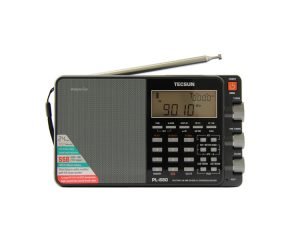
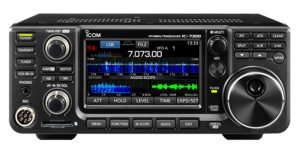
Tecsun PL-880 portable; Icom 7300 desktop transceiver/short-wave receiver with graphic frequency display similar to SDRs
So why an article on a supposedly dying media within the radio spectrum? Why has there suddenly become renewed interest in short-wave broadcasting by governments & media websites? As I discussed in some of the “AM Radio Today” series, there is concern that an over-reliance on the Internet & wireless based communications may not be wise in the long-term. There is the real threat of cyberwar from hostile nations & we’ve had evidence of that in the past few years. Everything from hacking to malware, ransomeware & demonstrated abilities to wreak havoc with infrastructure such as the electrical grids, banking data, government services have all been used & will continue to escalate in threat & in real damage to national sovereignty & ability to control, not to mention the damage to ordinary consumers & citizens. Short-wave radio remains an effective tool for communications that doesn’t rely on cyberspace in order to perform properly or effectively. It has proven over the past century to be a reliable, stable means of reaching listeners in many parts of the planet simultaneously. The new “Cold War” is very much a reality & information & counter-views have once again become important tools to tell the world’s populace what’s really going on. The US & it’s allies face increasing threats from hostile nations such as North Korea, Russia, China, Iran among others. All of these nations have reliable & robust short-wave services spreading their views & news throughout the world.

With such challenges facing our country & the western nation allies, a renewed look at this means of informing is now being re-examined. The recent closure of the highly popular & crucial source of information for a wide variety of users, Radio Australia has become a ‘hot-button’ topic among politicians, not only in that country, but throughout the impoverished Pacific nation islands whose reliance on the radio service has been terminated. For many isolated residents of the Australian outback & listeners on Pacific islands, Radio Australia was the first main source of weather warnings from cyclones/hurricanes. It was also often the only source of news, public affairs & entertainment. Protests & pressure have been mounted on the Australian government who refuse to budge & reverse the decisions that led to the demise of the service. However, opposition parties & now the private financial sector have been examining resurrecting Radio Australia to provide an important & much needed radio service, in spite of operating costs. Radio Canada International which ceased operation a number of years back is now a decision being scrutinized, especially in wake of a just released report on how many Canadians & businesses have been hacked in the past year. Resurrecting RCI to serve Canadians living & working outside the country may be worth exploring. Just today, a reversal of the decision by the Romanian government to allow shutting down of that country’s international radio service has saved a well listened to source of short-wave programming for Europeans. In Africa, both our own Voice of America & the UK’s BBC have made plans to implement new short-wave & AM radio services to counter the lopsided views being broadcast by China. Our government is just about to relaunch ‘Cold War’ broadcaster Radio Free Europe from a new facility in Hungary after recently relaunching the similar Radio Liberty in Romania & Bulgaria. The Swiss government have been debating a decision to re-implement their short-wave facilities to provide news & info to the large wave of refugees arriving on European shores. In Asia, India, Papua New Guinea & Indonesia have all been installing new short-wave stations to broadcast to sparse, isolated rural listeners.
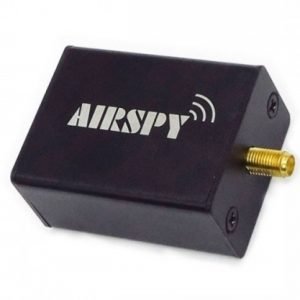
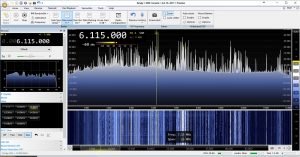
Newest short-wave receiver technology: software defined receivers (SDR) The Airspy R2A & Airspy Spyverter2 software interface
While short-wave broadcasting has been decreasing on an international level by westernized nations with sophisticated Internet infrastructure, it has been increasing in regions without sufficient or practical means to provide services via online means. It’s not likely that services in this part of the radio spectrum will disappear, but many of the broadcasting sources have changed. However, as our troubled world faces new challenges such as mass immigration by refugees, climate change & political upheaval, it can be stated that short-wave broadcasting isn’t likely to disappear anytime soon.

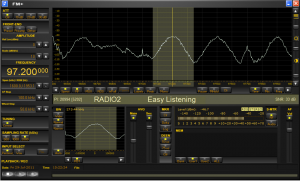
Top-of-the-line SDR: Perseus receiver & companion software

Some comments may be held for moderation. (New users)